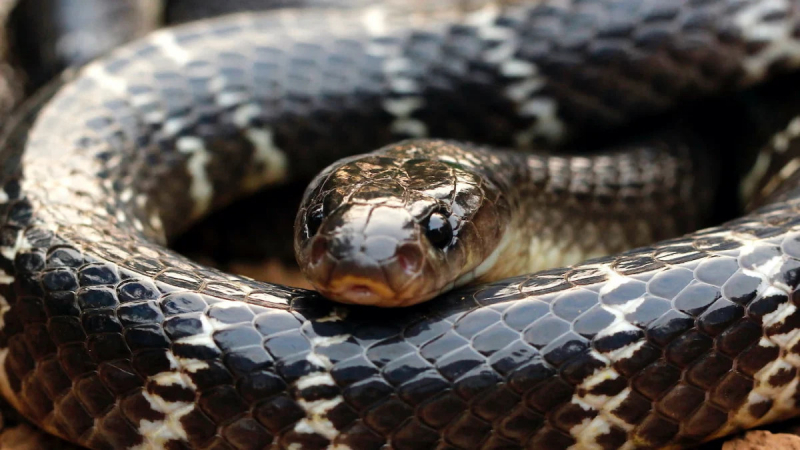Krait
The krait, a snake of the genus Bungarus, is a highly venomous reptile found in various regions of Asia. Known for its potent neurotoxic venom and distinctive appearance, the krait holds a significant place in the biodiversity of its habitats. Let's delve into the characteristics, behavior, and importance of this enigmatic serpent.
Kraits are characterized by their slender bodies, distinctive color patterns, and small, fixed fangs. Most species of kraits exhibit a tricolor pattern, with bands of black, white, and shades of grey or blue. This visually striking appearance serves as a warning to potential predators, signaling the snake's venomous nature.
The venom of the krait is highly potent, primarily composed of neurotoxins that affect the nervous system. Krait bites can lead to paralysis, respiratory failure, and, if left untreated, can be fatal. Despite their dangerous reputation, kraits are generally shy and prefer to avoid human contact. However, their nocturnal habits and secretive nature can sometimes lead to accidental encounters.
Kraits are found in a variety of habitats, ranging from dense forests and grasslands to agricultural areas. They are particularly prevalent in Southeast Asia, including countries like India, Bangladesh, Myanmar, Thailand, Vietnam, and Indonesia. Kraits are well-adapted to both terrestrial and aquatic environments, making them versatile predators.
Kraits are primarily nocturnal hunters, preferring to hunt under the cover of darkness. Their keen sense of smell helps them locate prey, which includes other snakes, lizards, and small mammals. Kraits are known for their stealthy approach when hunting, relying on their slender bodies and cryptic coloration to blend into their surroundings.
In some Asian cultures, kraits are surrounded by folklore and mythologies. While they are often feared due to their venomous nature, some communities also recognize the ecological role that kraits play in controlling rodent populations, which can be beneficial for agriculture.
















